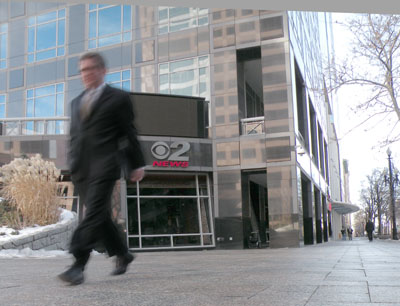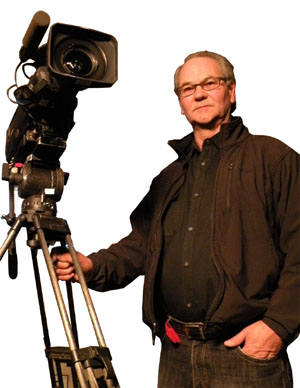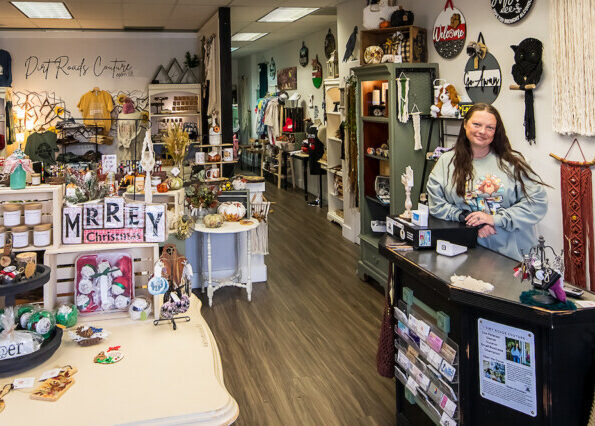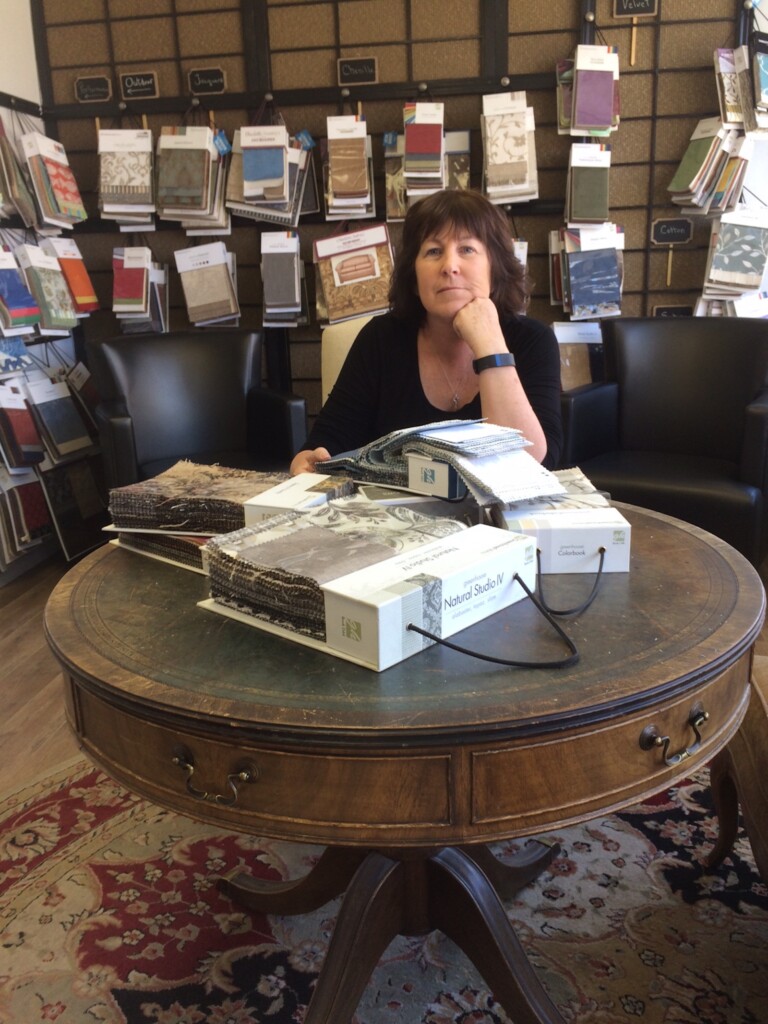Utah TV News stations are in a turmoil, and amid declines in viewership stations are sending their long-time anchors out to pasture.
by Todd Tanner
When I was a kid attending the grade school named in honor of television inventor Philo T. Farnsworth, my “bedtime” was 10pm. The one exception occasionally allowed by my mother was that I could stay up until 10:30pm ONLY if I watched “the news”. A junkie was born.
Back then the words of anchors and reporters wafted through the air waves, delivering daily doses of the best available facts. But these days, “the news” is itself becoming the news, as questions arise from the mystery of why those familiar faces are disappearing from the local television landscape.
Obvious changes include the departures of long-time anchors Dick Norse (KSL) and Michelle King (KUTV). They bowed out gracefully, retiring. Other changes have been less charming.
At KSL, reporter/anchor Shelley Osterloh was let go in July of 2007, just days short of her 30 year anniversary with the local broadcast giant. She was part of a small cluster of staffers who were let go in what was described as a cost cutting measure. On Monday, January 5th, KSL cut staff again by eight employees, including reporter Gene Kennedy. “It is unfortunate and we are sad to see any of our team members have to leave, but fiscal responsibility is critical at this time,” Greg James, KSL vice president said in a recent interview.
KUTV Channel 2 cut over a dozen positions this past summer and closed its Utah County Bureau. Most who got the axe worked “behind the scenes”, minimizing the on-air impact. Reporter Nicole Hunter was let go, but reappeared on Fox 13 days later.
But nowhere has the trouble been more transparent than at KTVX Channel 4. Prominent personalities Randal Carlyle, Ruth Todd, Terry Wood, and Susan Wood, are among those who have vanished from the small screen, along with reporters Mike McKay and Kerry Kinsey. Additionally, three recent rounds of lay-offs have ended employment for dozens of others, including assignment editors, special project producers, promotions and production staff.
Why do Utah’s TV stations seem to have more personnel problems than McDonald’s locations? And how did “fiscal responsibility” become so “critical at this time?”
Sam Prig offers insight that begins to answer these questions. “Advertising is based on eyeballs” says the former KSL employee and current owner of White Rabbit Productions. “One hundred percent of the advertising dollars went three ways, now it goes 150 ways.” He’s referring to the myriad of marketing opportunities that advertisers have been able to explore in recent years with smaller networks, cable television, and of course, online. Prig says that when he started in television, “if you owned a TV station, it was a license to print money.” Now he wraps up the current climate of the business in just two words: “It sucks.”
Research from Nielsen Ratings demonstrate the fragmentation of TV. While the overall television audience expands with population growth, actual viewership has been sinking and fragmenting for years. On a national level, the top ten Network Programs of the mid-1990’s (including Utah produced “Touched by an Angel”) consistently drew over 20 million viewers each week. That threshold is now seldom surpassed, and only by national shows like “American Idol”. During the week of December 29th, 2008, research posted on Nielsen’s website notes that not a single top ten program cracked the 20 million viewer mark, and eight of the top ten fell short of 10 million viewers.

On a local level, news broadcasts are affected much the same way. A Deseret News article from December 1st, 2008 reported that KSL is still the king of evening news, having won the Nielsen November ratings period with an average 11.1 rating to second-place KUTV’s 10.8 rating. A rating point represents 1 percent of the homes in a television market. Nielsen notes 919,390 homes in the Salt Lake TV market.
While this “win” sounds like good news for KSL, its actually an ominous sign for all of Salt Lake’s stations. What the Deseret News failed to report, is how throughout the 1990’s KSL consistently recorded around 20 rating points. In short, the audience size has nearly dropped by half from just a decade ago.
So where have the viewers gone? They’re still viewing, but their habits have changed. Jason Walker works at Sam Weller’s Bookstore across the street from KUTV’s impressive Main Street Studios. Aside from witnessing the comings and goings of the station, Walker also has dozens of newspapers at his disposal inside the store. When asked where he gets his news, the answer is simple. “The Drudge Report.” He likes the variety and depth of national and international news items, and loves the pick and chose nature of online sources. “When I watch Channel 2, I end up watching a dozen meaningless stories before they get to the one thing I wanted to see” he says. Walker echoes the sentiments of many when he says that “online news keeps getting bigger and better, while TV news just seems to get worse.” He adds that he still watches local news on occasion for sports highlights — with the help of TIVO. His wanderings through the media are typical, and so are his complaints about the lack of substantial stories.

With the exception of a few special reports and sweeps stories (four months out of the year), TV news stories are rarely longer than 90 seconds, and the majority are less than 60. Investigative stories are also few and far between. Only KSL and KUTV have investigative reporters. Prigg points out that if you watch for a while you’ll likely notice that they only expose the questionable deeds of small businesses and individuals. “You’ll never see a story about a bum deal from a big car dealership in town, that would cost a station ad money.”
Prigg says he was able to work in the “second golden age of television”, where TV executives “drove Mercedes and polished their Rolexes after scoffing at the notion of cable news.” Prigg says that when there were only three networks (abc, nbc and cbs) competing for viewers, the pie was huge and salaries were generous, and their coverage was great. Prigg worked on a local TV news magazine program where he would usually have an entire week to work on a story.
Today, most reporters at all four Salt Lake stations don’t chose their own stories. Very few have a specialized “beat” such as politics that allows them to research and break new and important stories. Instead, reporters are assigned the most visual, sensational stories of the day. They get marching orders, travel to locations, conduct interviews, shoot b-roll, log tape, write their stories, edit tape, feed their stories back to the stations, do on-air live shots, come back to the station, and re-write shorter versions of the same story for subsequent broadcasts and online summaries. They also have to grab lunch, put on make-up, and pee somewhere along the way. They’re working hard, but they too are up against a shifting industry which constantly requires it’s employees to “do more with less” and chase stories with mass appeal, where style generally wins over substance.
Important but visually boring stories on topics such as school vouchers or medical research often get nixed in favor of exciting images. During the first week of 2009, a petty thief breaking into cars in downtown Salt Lake City was caught on surveillance video, and subsequently got more airtime than the State Legislature issues. But the petty thief is strangely fun to watch and likely draws more curious eyes than, Mark Shurtleff.
Utah TV News Anchors Then and Now
| Then | Now | ||
|---|---|---|---|
| Kimberly Perkins | Utah’s first legitimate news babe. Perkins was a news anchor for 12 years on KTVX news and won an Emmy for her work. Perkins became well known for her “good news” segments called “Profiles in Caring” | Perkins is the founder of GoodTube, which offers good news about how people are making their world a better place. | |
| Dick Nourse | Probably Utah’s biggest news star. Utahns first became acquainted with Nourse when he was sent on assignment to Saigon to cover the Viet Nam War for KSL 5 in the late 1960s. | Local embeded corespondents are unheard of. Only cable news offer war correspondents. Dick Nourse has been sited at the local bar the Tavernacle — go Dick! | |
| Mark Eubank | Eubank became iconic with weather forecasting in Utah. His charisma for describing a low pressure system rolling in made him reportedly a $300 thousand per year income. | Eubank continues to study Meteorology even today. He operates a weather consulting business and is still working on developing new methods to make weather forecasting more accurate. | |
| Shelley Osterloh | Shelley Osterloh was a local reporter on KSL for years. She even had her own Oprah-style talkshow in the 80s. KSL did not renew her contract in 2007. “It’s a shame someone can be an on air personality for over 30 years and retire (or be let go) without even a mention at the end of a newscast.” –utahradionews.com | Osterloh has managed to land on her feet despite a premature departure. Osterloh was seen working as a Producer at the Crandal Canyon Mine disaster for a cable news network shortly after her termination. | |
| Michelle King | Michelle King was politely asked to retire after her 30 reign at KUTV News. King took an unconventional role as a woman anchor in Utah, raising children while working full time at KUTV News. | Michelle King and her husband Steve are currently serving as Missonary Presidents in Atlanta | |
| Randall Carlisle | Randall Carlisle was on-air at KTVX News for 17 years. Without any notice or good bye– Randall “was pulled off the air” as the Deseret News reported . How much pulling was required; or subsequent kicking and screaming was not reported. Carlisle however harbors not bitter feelings, and says, “he understands completely”. | We cannot find any references to Randall Carlisle on the Internet as to what he is doing today. We challenge any reader to find out what Randell is doing today. Our phone calls to KTVX have not been returned. |
Is it the broadcasters fault for presenting sensational stories, or the fault of the public for eating them up? Either way, the old paradigm of sensational news is financially failing.
Fighting an uphill battle to gain viewers and revenue, many stations have also expanded their broadcasts in recent years trying to cash in on more commercials. In 2002, Fox 13 News now produces 38 hours of live news weekly. While such expansions technically bring about more news coverage for viewers, Fox has added less than a dozen employees since 2002, bringing its news staff to a total of roughly 60 people. Do the math, and this trend results in less research and writing going into stories as stations expand.
Compounding the financial crisis in local news is another issue which the public is largely unaware of — station ownership. The average viewer often thinks they are watching a local presentation of ABC, CBS, NBC, or Fox News. In actuality, not a single major network owns a station in Utah. The FCC limits the share of an audience any one broadcaster can “own”, paving the way for affiliated stations in smaller cities to be owned by anyone who can offer up the asking price.
KSL/NBC is owned by Bonneville International which falls under the umbrella of LDS Church holdings. To it’s credit, Bonneville has a long broadcast history compared to other markets.
The other three stations have all been purchased by venture capitalists within the last two years. KTVX/ABC is owned by Newport Television, KUTV/CBS is owned by Four Points Media, and Fox 13 is owned by Local TV.
These out of state entities operate to some extent like house “flippers”. Their model is to make the unfortunate nesissary changes the previous owners were unwilling to make: mainly laying off expensive talent, cutting benefits, and running more sensationalized news. A source at KTVX Channel 4 says the end of a 401k program prompted the “retirement” of Clayton Brough last December. The seasoned weatherman who endeared viewers in 2004 when he publicly shared his battle with cancer is also a school teacher, with more reliable benefits in that line of work.

As if receding ratings and cost cutting venture capitalists haven’t impacted the new business enough, toss the current recession into the mix. Some of the largest and most consistent television advertisers have pulled out. A source from one TV station tells Utah Stories that advertising revenue is down as much as 70% from fall of 2007 to fall of 2008. Such staggering losses will inevitably lead to even bigger changes in the near future, unless things turn around quickly.
If you have a favorite newscast or newscaster, appreciate them while you can. There are no guarantees at the moment. But don’t dismiss television news just yet. While their piece of the “advertising pie” has gotten smaller, they’re still in the game, even if they are hurting. They’ve contributed to many of their own problems, but as such, they will inevitably come up with creative solutions.
Its a good thing that viewers are not watching dumbed down news. Local news stations are too important to “flip” for a profit. But as such, they will inevitably find creative solutions; or die, but never completely.
The medium of television has immense power in the immediacy. On the morning of September 11th 2001, viewers watched events unfold on a live television news broadcast.
When there are heavy and urgent questions — waiting for tomorrow’s newspaper will never do. Television news will survive. What’s happening now is a seismic shift in the industry. The end of radio was predicted with the advent of the TV. As the Internet and on-demand cable continue to fragment viewership, the new media landscape won’t prevent viewers from relying on local TV.
Reader Comments
Stacy
I appreciate you bringing us this story. I have been confused why my local tv station keeps changing people so much. I even wrote to them asking why, but of course no answer. Not enough employees to answer emails obviously. Your article has cleared it all up for me. I am having a hard time sticking with them. Just when I get used to the new person they are gone for no reason.
Herbert Philbrick
I think is terrible that Terry and Susan Wood were both fired without cause just before Chirstmas 2008. It was bad enough when they were demoted to weekend anchors. But, then to be thrown out on the street and treated like total scum is downright dirty and unprofessional. My sympathies and condolences to them both. I will sincerely miss them co-anchor the news. Has anyone heard from then since their termination? I hope they can find another media outlet that will give them the honor and respect they truly deserve. HP.




